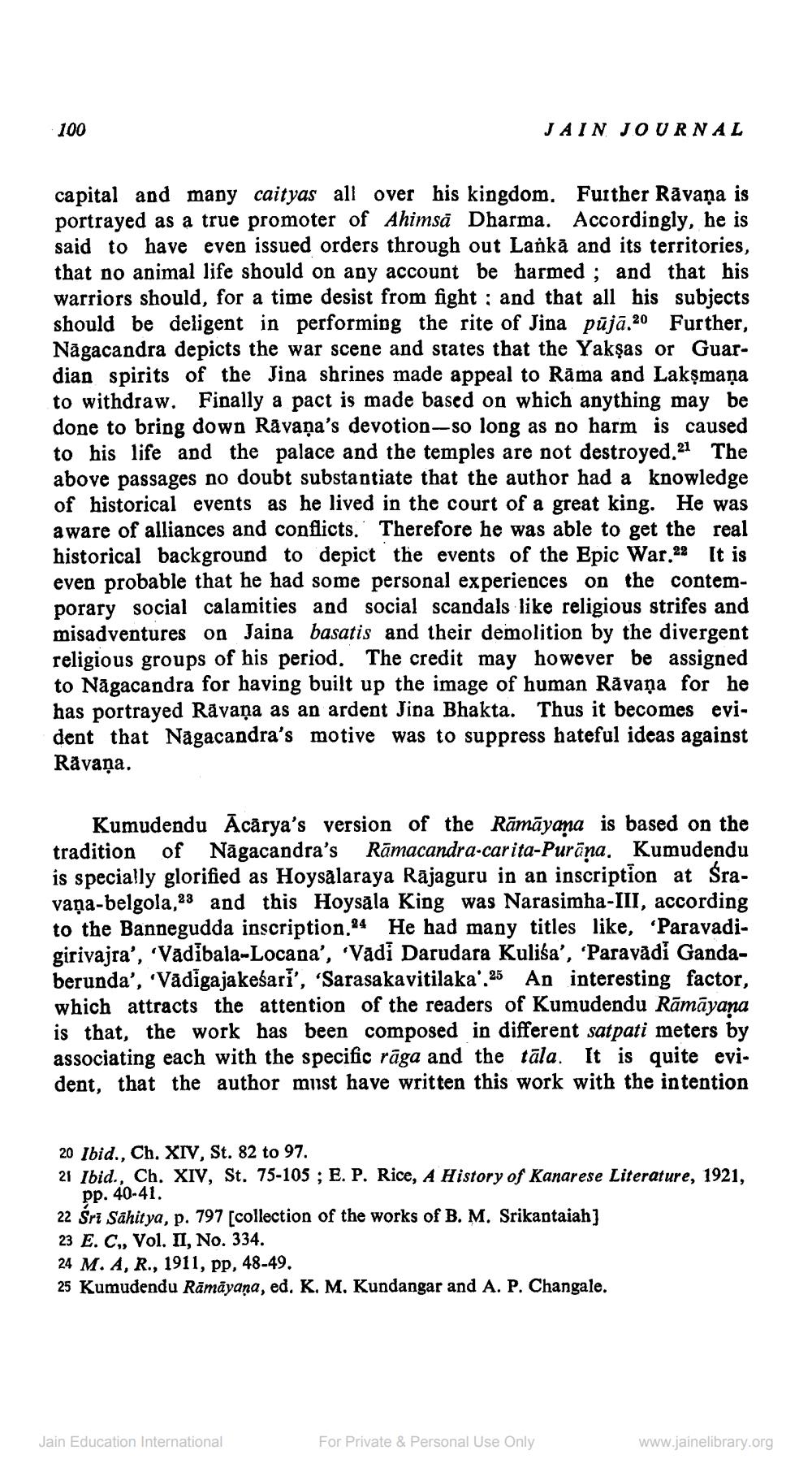________________
100
capital and many caityas all over his kingdom. Further Rāvana is portrayed as a true promoter of Ahimsā Dharma. Accordingly, he is said to have even issued orders through out Lanka and its territories, that no animal life should on any account be harmed; and that his warriors should, for a time desist from fight and that all his subjects should be deligent in performing the rite of Jina pūjā.20 Further, Nagacandra depicts the war scene and states that the Yaksas or Guardian spirits of the Jina shrines made appeal to Rāma and Lakṣmaṇa to withdraw. Finally a pact is made based on which anything may be done to bring down Ravana's devotion-so long as no harm is caused to his life and the palace and the temples are not destroyed.21 The above passages no doubt substantiate that the author had a knowledge of historical events as he lived in the court of a great king. He was aware of alliances and conflicts. Therefore he was able to get the real historical background to depict the events of the Epic War.22 It is even probable that he had some personal experiences on the contemporary social calamities and social scandals like religious strifes and misadventures on Jaina basatis and their demolition by the divergent religious groups of his period. The credit may however be assigned to Nagacandra for having built up the image of human Ravana for he has portrayed Ravana as an ardent Jina Bhakta. Thus it becomes evident that Nagacandra's motive was to suppress hateful ideas against Rāvana.
JAIN JOURNAL
Kumudendu Acarya's version of the Rāmāyaṇa is based on the tradition of Nagacandra's Rāmacandra-carita-Purāņa. Kumudendu is specially glorified as Hoysalaraya Rajaguru in an inscription at Śravaṇa-belgola,23 and this Hoysala King was Narasimha-III, according to the Bannegudda inscription.24 He had many titles like, 'Paravadigirivajra', 'Vadībala-Locana', 'Vadi Darudara Kulisa', 'Paravadi Gandaberunda', 'Vadigajakeśari', 'Sarasakavitilaka.25 An interesting factor, which attracts the attention of the readers of Kumudendu Rāmāyaṇa is that, the work has been composed in different satpati meters by associating each with the specific raga and the tāla. It is quite evident, that the author must have written this work with the intention
20 Ibid., Ch. XIV, St. 82 to 97.
21 Ibid., Ch. XIV, St. 75-105; E. P. Rice, A History of Kanarese Literature, 1921, pp. 40-41.
22 Sri Sahitya, p. 797 [collection of the works of B. M. Srikantaiah]
23 E. C,, Vol. II, No. 334.
24 M. A, R., 1911, pp, 48-49.
25 Kumudendu Rāmāyaṇa, ed. K. M. Kundangar and A. P. Changale.
Jain Education International
For Private & Personal Use Only
www.jainelibrary.org




